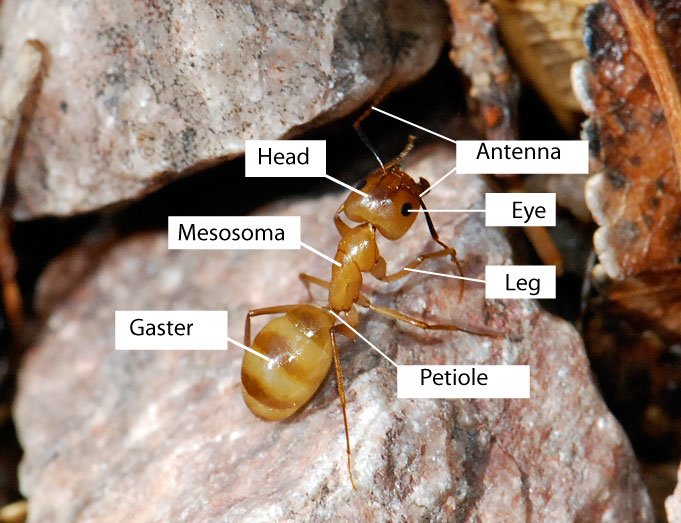We have a question for the Consult-Ant* this week.
I have an ant question.
I was curious about ant eyesight. Not about their color vision but more specifically their quality of vision in the dark. Is it better or worse than a human’s night vision?
This is a great question!
The first thing to remember about ants is that they perceive the world in vastly different ways then we humans do. They produce a number of different chemicals and communicate in ways that we can only dimly appreciate. Let’s not forget, some ants are completely blind and they get around just fine.
That said, ants do usually live in dark tunnels, either underground or in wood. Many species forage at night, either all the time or during certain seasons. They are able to find their way around in the dark.
For example, this carpenter ant lives in the hot desert. It forages at night and is rarely seen during the day.
To study how ants see at night, scientists have been looking closely that the anatomy of the eyes of ants.
This figure from Invertebrate Vision, edited by Eric Warrant, Dan-Eric Nilsson shows that dark-adapted eyes of invertebrates are structurally different from light-adapted ones.
Ajay Narendra and his colleagues (2011) have been studying Australian bull ants (Narendra has photographs of bull ants ) that are active at night and comparing them to day-active species. They found that ants that were active at night had different eye measurements and eye structures, both within a given species (that is active both during the day and night) and between related species. The eye area, facet size, and ocelli (the smaller simple eyes at the top of the head) size, etc. were larger in night-active ants. Reid et al. discusses more specific information about how the ants use their specialized eyes to see polarized light and landmarks during navigation at night.
Have I danced around your original question long enough? Comparing humans to ants is difficult because in a lot of ways it is comparing apples to oranges, plus our understanding of what other animals perceive is limited. Nevertheless, I’m going out on a limb. All these structural differences suggest that certain ants can be quite specialized for night vision. Based on that evidence, it would seem that ants are probably just as capable, if not more capable of night vision than unassisted humans. Of course humans are capable of inventing and using sophisticated devices to assist our night vision. In that case, humans win hands down.
What do you think about night vision in ants?
For more information:
Ajay Narendra, Samuel F. Reid, Birgit Greiner, Richard A. Peters, Jan M. Hemmi, Willi A. Ribi and Jochen Zeil. (2011) Caste-specific visual adaptations to distinct daily activity schedules in Australian Myrmecia ants. Proc. R. Soc. B. 278: 1141-1149. (free .pdf available)
Reid, S.F., A. Narendra, J.M. Hemmi and J. Zeil. (2011). Polarised skylight and the landmark panorama provide night-active bull ants with compass information during route following. The Journal of Experimental Biology. 214: 363-370. (free .pdf available)
Wild About Ants post about color vision in ants
(* As I mentioned previously, I have been the “Consult-Ant” on the Leaping from the Box website. I answer questions about ants and ant farms. From now on I will post the answers here, and when Karen has time she will also post the answers on her site.)








